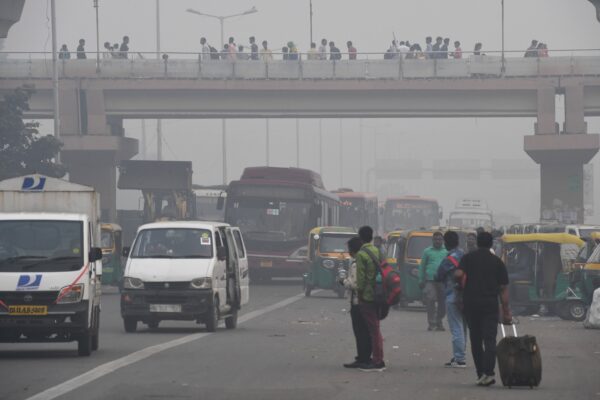Air pollution caused by industrialization, wildfires, and other sources remains “the greatest external threat” to public health, reducing average human life expectancy by 2.3 years, according to a benchmark study.
The Air Quality Life Index (AQLI) report was developed and published by the Energy Policy Institute at the University of Chicago (EPIC) on Aug. 29.
According to the report [pdf], the effect of fine particulate matter pollution on life expectancy is “comparable to that of smoking, more than three times that of alcohol use and unsafe water, and more than five times that of transport injuries like car crashes.”
Michael Greenstone—the Milton Friedman distinguished service professor of economics at the University of Chicago and co-creator of the AQLI—said three-quarters of air pollution’s effect on global life expectancy occurs in six countries “where people lose one to more than six years off their lives because of the air they breathe.”
The six countries are Bangladesh, India, Pakistan, China, Nigeria, and Indonesia. About 59 percent of the world’s increase in pollution has come from India since 2013, according to the AQLI report.
In addition, the Democratic Republic of the Congo, Rwanda, Burundi, and the Republic of the Congo are among the 10 most polluted countries in the world, the report states.
“Despite the fact that Asia and Africa contribute 92.7 percent of life years lost due to pollution, they lack basic infrastructure for change,” the report reads.
“Just 6.8 and 3.7 percent of governments in Asia and Africa, respectively, provide fully open air quality data, and just 35.6 and 4.9 percent of countries in Asia and Africa, respectively, have air quality standards.”

Although China’s pollution has decreased by 42.3 percent since 2013, the country’s pollution is still six times higher than the levels recommended by the World Health Organization (WHO), reducing life expectancy by 2.5 years, according to the report.
The WHO recommends that average annual readings of fine particulate matter—known as PM2.5—should be no more than 5 micrograms per cubic meter. PM2.5 can enter the lungs and pose significant health risks, including respiratory and cardiovascular diseases and cancer.
The AQLI data reveal that permanently reducing global PM2.5 air pollution to meet the WHO guideline would add 2.3 years to the average human life expectancy, “or a combined 17.8 billion life-years saved worldwide.”
Most Polluted Counties in US
In the United States, 20 out of the top 30 most polluted counties in 2021 were in California because of wildfires.
The AQLI data show that pollution levels in California’s Central Valley exceeded the nation’s PM2.5 standard of 12 micrograms per cubic meter.
Data released by the California government reveal that the state has reported 4,936 wildfires so far this year, resulting in the scorching of 222,863 acres of land. Last year, California reported more than 5,000 wildfires, which affected about 143,208 acres of land.
“In the United States, residents only lose an average of 3.6 months. Americans breathe much cleaner air because of strong policies built on a foundation of data, information, and advocacy. Many of the most polluted countries today do not have that foundation in place,” the report states.
According to the EPIC, “While there is a large global fund for HIV/AIDS, malaria, and tuberculosis that annually disburses $4 billion toward the issues, there is no equivalent set of coordinated resources for air pollution.
“In fact, the entire continent of Africa receives under $300,000 in philanthropic funds toward air pollution. Just 1.4 million USD goes to Asia, outside of China and India,” it stated.
“Europe, the United States, and Canada, meanwhile, receive $34 million, according to the Clean Air Fund.”
Reuters contributed to this report.



